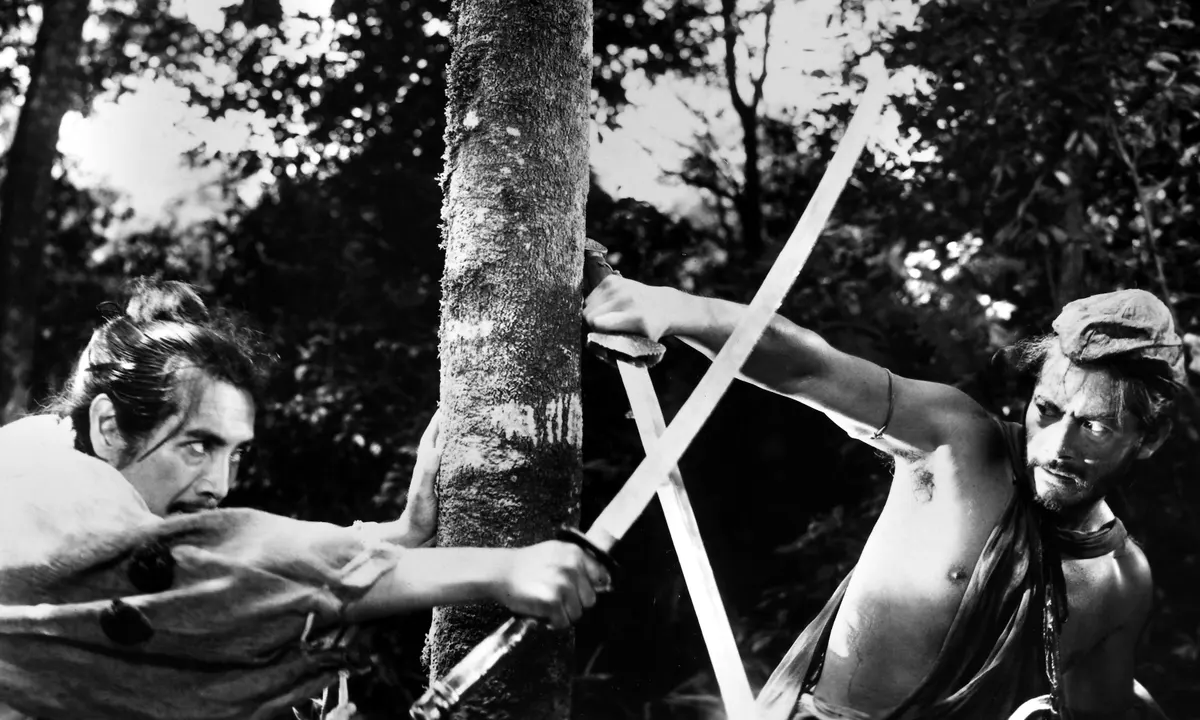




Dir.: Akira Kurosawa; Cast: Toshiro Mifune, Machiko Kyö, Masayuki Mori, Takashi Shimra, Minoru Chiaki, Kichijioru Ueda; Japan 1950; 88 min.
From Agatha Christie to Patricia Highsmith modern literature is fraught with unreliable narration. One of the first writers to employ the device was Robert Browning back in his 1869 novel The Ring and the Book.
Akiro Kurosawa filmed his brilliantly constructed script into a cinematic masterpiece that unfolds under the crumbling arches of a temple in medieval Kyoto during a meeting between a priest, a woodcutter and a sceptical traveller, the first two having been witness to the trial of a villainous bandit who allegedly robbed a samurai and raped his wife.
The bandit Tajomaru is actually very proud of his wrongdoing – but we really question his guilt. His narrative is full of self-grandeur, but it does not make him into the vainglorious beast he really longs to be. The wife Massako is an arch feminist, equally fed up with her snobbish and cold-hearted husband as she is with the brutal Tajomaru, played by a mesmerising Toshiro Mifune, who would go on to star in many of Kurosawa’s films.
The traveller’s questions form the basis of a series of flashbacks to the trial, and the conflicting evidence of five people, one of them speaking through a medium. But there is something missing in Massako’s chronicle of events: she faints at an opportune moment, and wakes up displaced and confused. Samurai Kanazawa is actually the most evil one: arrogant and puffed up with his class superiority, he is also as greedy as the bandit. The woodcutter is the Everyman, who wants to be right, but is too confused by the ordeal to get to the heart of the truth. He, like the priest, is waiting for a moment of redemption that materialises later on in form of an abandoned baby.
Kurosawa tells the story not as a realistic undertaking, but as a fairy story set deep in the woods where danger lurks in dark corners for all the main protagonists. The black-and-white images of DoP Kozuo Miyagawa echo the symbolism of Fritz Lang’s early German features, with the flickering shadows tricking the audience, as well as the characters, into believing their version of the truth which remains subjective and intangible until the end.
The ‘Rashomon structure’ appears again and again during film history: notably in The Usual Suspects (1995), and Gus Van Sant’s Elefant (2003), a chronicle of the shooting at the Columbine High School.
Rashomon won the Golden Lion at Venice in 1951 and its commercial release in Britain eased the gradual transition of Japanese and Asian cinema into the mainstream after the dehumanising events of the Second World World.
ON RE-RELEASE FROM 6 January 2023 courtesy of BFI as part of a major KUROSAWA RETROSPECTIVE,